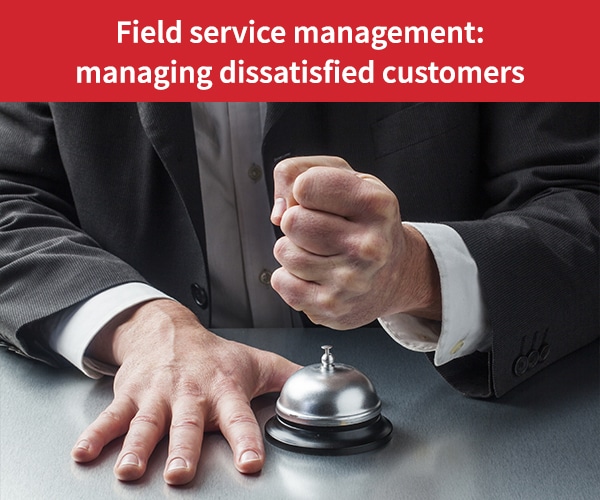
- Field Service Management
- Field Service Software
- Finance
- ISP
- P&L
Navigating ISP Growth – Part II: Transformative effects of FSM on P&L


NAVIGATING ISP GROWTH. PART II: ENSURING EFFICIENCY AND SCALABILITY FOR ISP BUSINESSES
Building on our exploration of the transformative effects of field service management on P&L in Part I of this series where we highlighted its impact on customer experience and installation efficiency, Part II focuses on another critical aspect of navigating ISP growth: routing and scheduling optimization capabilities. With a growing subscriber base, telecom operators will experience more and more installations (that positively impact revenue / top line KPIs) moving forward. However, despite all efforts, there will also be a rise in repeat visits, at least in absolute numbers, and potentially an uptick in troubleshooting tickets, some of which may require a truck roll. All of this will negatively impact profitability / bottom line KPIs if telecoms operators are not taking appropriate measures to ensure their processes are optimized.
Positively impact your field teams
A best-in-class FSM solution comes with a powerful routing and scheduling engine, based on reliable traffic data to help you positively impact your field teams:
- Travel time ratio: the less time the technicians are spending on the road traveling the better, because it means they are spending most of their time installing new customers or fixing issues that can impact existing customers.
- Gas consumption: whether it be from a financial perspective or from an environmental perspective, it’s a good idea to keep your gas consumption at the lowest level possible.
- Utilization rate: if a customer cancels an appointment, it creates a gap in the technician’s schedule. Having the ability to automatically fill that gap while keeping all other schedules optimized will ensure you make the best use of your technicians’ time.
- Work accident rate: a good FSM solution produces realistic schedules, and provides tools to address unexpected situations with the appropriate response in real-time. This reduces the pressure put on your field technicians’ shoulders, thus also reducing their stress and the probability of road accidents and work-related injuries.
Those are just a few examples illustrating how the proper FSM solution, built from the ground up for routing and scheduling optimization, will positively affect your operational efficiency and your profitability / bottom-line KPIs.
The importance of scalability when selecting a field service management tool
Consider the situation from another perspective. You might be thinking, “I already have an OSS/BSS system or an ERP,” thus wondering: “Why should I add an external component if it already incorporates an embedded FSM-like solution?” However, there are several considerations to bear in mind.
Firstly, ask yourself: Is this solution scalable? There is no one-size-fits-all solution that performs perfectly in every aspect. Each system, much like every organization, has its core business. This implies that your OSS/BSS/ERP FSM component might lack the functionalities mentioned above or they might not be sufficiently comprehensive to deliver the expected value. Scalability is also a concern, as scaling a billing process, a network monitoring system, or a workforce management solution varies significantly. There are specialists available—why not explore their expertise?
Finally, you may want to build something that is future-proof, and putting all your eggs in one basket is not the best way to achieve this. If you build a modular, component-based information system, it will be easier to adapt to future situations, such as the acquisition of a competitor. In this scenario, they may have a different OSS/BSS system and it would be crucial for you to be able to streamline and merge the field service processes.
The benefits of a specialized, best-of-breed field service solution
This means you should be looking for a specialized, best-of-breed solution, meaning one solution that will easily integrate with your existing system while providing all the expected value. The benefit of a best-of-breed solution is that it comes with a limited initial investment, which, once again, will positively affect your bottom line KPIs. Along with a best-of-breed solution, it will be important to look for software that is configuration-based. There are several reasons for this requirement:
- Many providers make huge promises about their solution’s capabilities, but to enable them often entails significant time and financial investments in developments and customizations. Opting for a configuration-based FSM software allows you to reduce your time-to-production, positively impacting your cash-flow. This approach enables you to reach the point of seeing ROI much faster compared to the alternatives.
- ISP businesses face constant changes, and finding the “ultimate” customer experience is a process, not something that happens overnight. To achieve your goals, the ability to make changes to the FSM solution on the go is crucial, eliminating the need to wait for the results of a lengthy IT production process.
Business model alignment aids growth
Finally, during this new phase of your expansion, you will grow your recurring revenue. It will be better to find a solution with a business model that aligns with yours, so that once again your cash-flow is positively impacted. Opting for a cloud-based software (with no maintenance and hosting costs) and a subscription-based pricing model will provide you with visibility into your future costs. This empowerment positions your organization for future growth. If all the above criteria are met, you can simultaneously maintain profitability and secure your capacity to invest, or attract investors.
Conclusion
In conclusion, our two-part exploration on “Navigating ISP Growth” has provided a comprehensive understanding of the pivotal shifts taking place in the telecommunications industry. Part I underscored the significant mindset shift required when you transition from building your network to connecting your new subscribers. The emphasis on customer satisfaction and first-time-right, along with the surge of a different type of workload (smaller jobs with shorter deadlines) and new KPIs, will lead you to reconsider the way you run operations and how you support your employees.
Part II delved deeper into the challenges faced during this growth phase, emphasizing the importance of routing and scheduling optimization capabilities, and some limitations of all-in-one solutions that may not scale with your business down the road, or at a prohibitive cost. As ISP businesses strive to convert homes passed into active subscribers, this series has highlighted how expertise and focus from your software providers are key to helping you succeed while preserving your profitability.
We value your insights and opinions. Feel free to share your thoughts or spread the knowledge by sharing this post with your network.
For more articles like this, subscribe to our newsletter to stay up to date with the latest from Praxedo.
DISCOVER THE PRAXEDO ADVANTAGE
Praxedo has been a trusted provider of field service management (FSM) solutions for companies across the globe since 2005. Our success is attributed to our unwavering focus on delivering the best FSM tools in the market. Unlike other providers, we don’t aim to supply all enterprise applications. Instead, we prioritize our expertise in FSM and offer a cloud-based solution that streamlines deployment from start to finish.
Today, more than 1,300 companies including large enterprises and SMBs, and 60,000 users across the globe rely on Praxedo daily to optimize their field service operations. Our solution enables them to increase productivity, optimize resources, and facilitate seamless data exchanges between field personnel such as technicians and engineers, and their dispatchers.
Want to learn more? Schedule a demo today.
Our similar articles.
-
- Field Service Management
- Mobile App
- preventive maintenance
- renewable energy
Renewable energy system maintenance: How to improve your safety protocols
May 6, 2022 -
- Field Service Management
- Field Service Software
- renewable energy
- energy
- solar
Maximizing Solar Efficiency: Tackling Downtime With Field Service Management
April 16, 2024 -
- Field Service Management
- Customer Satisfaction
- Technician
- Technicien
- Work orders
- Customer satisfaction
How to “manage” angry customers in field service management
December 16, 2020


